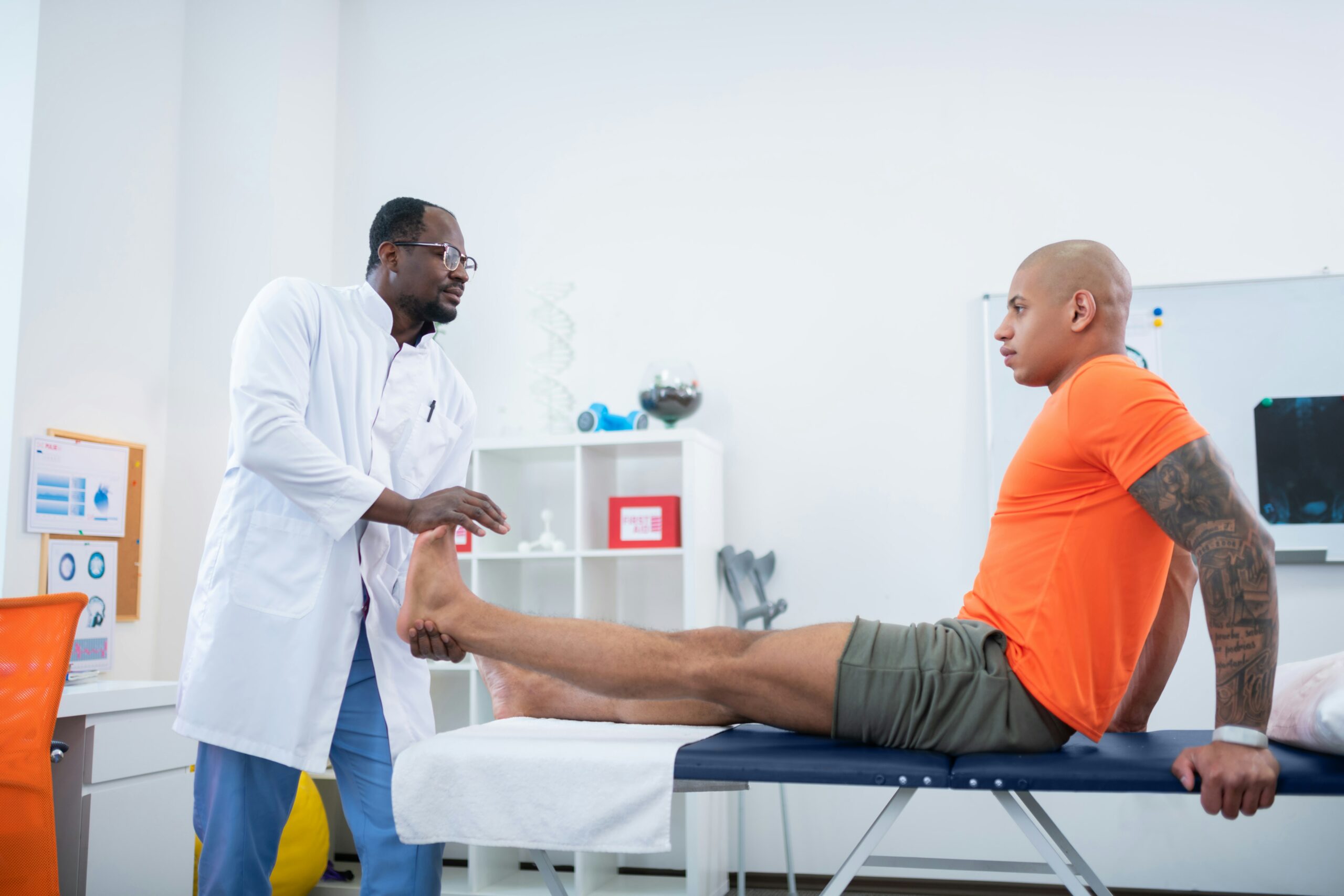
Workplace injuries remain a pressing concern across industries in the United States. From repetitive strain injuries in office settings to heavy lifting accidents in warehouses, the physical toll on workers can be significant. When such injuries occur, physical medicine provides a proactive and practical approach to restoring function and reducing pain. Instead of relying solely on medication or invasive procedures, physical medicine emphasizes rehabilitation and recovery through tailored treatment plans.
Moreover, physical medicine supports both immediate care and long-term healing. By combining therapeutic exercises, manual therapies, and patient education, practitioners can address not only the injury itself but also its root causes. This integrated approach empowers employees to recover more fully, thereby reducing the risk of recurrence and promoting overall well-being.
Early Intervention and Prevention
One of the most significant advantages of physical medicine is its focus on early intervention. When employers encourage workers to seek treatment promptly, physical therapists and rehabilitation specialists can prevent minor injuries from becoming chronic conditions. For example, addressing a back strain promptly through targeted stretching and strengthening can help prevent an employee from developing long-term spinal issues. Consequently, this saves both the worker and employer from prolonged downtime and medical costs.
In addition, physical medicine not only responds to injuries but also emphasizes the importance of prevention. Practitioners often analyze workplace ergonomics and employee movement patterns to reduce strain. By recommending ergonomic chairs, proper lifting techniques, or regular movement breaks, physical medicine specialists help create safer work environments. Therefore, employees benefit from reduced risks while employers see improvements in productivity and morale.
Customized Rehabilitation Programs
Each workplace injury is unique, and physical medicine excels in creating customized rehabilitation programs tailored to individual needs. Instead of prescribing a one-size-fits-all treatment, physical medicine specialists design care plans based on an employee’s specific condition, job role, and overall health. For instance, a construction worker recovering from a knee injury will require different exercises and recovery strategies than an office employee healing from carpal tunnel syndrome. This personalization ensures more effective recovery outcomes.
Furthermore, these individualized plans adapt as the patient progresses. With regular evaluations, physical therapists can adjust exercise intensity, introduce new treatments, or gradually taper sessions as healing progresses. Consequently, employees experience a steady improvement in mobility, strength, and confidence. This adaptable approach encourages workers to stay engaged in their recovery journey and maintain consistency in their treatment.
Pain Management Without Dependency
Another vital role of physical medicine lies in pain management. Workplace injuries often bring lingering discomfort, but physical medicine reduces reliance on prescription painkillers, which can carry risks of dependency. Through methods such as therapeutic massage, ultrasound therapy, or electrical stimulation, patients can achieve significant relief without the need for medication. This approach promotes safe and sustainable recovery.
Additionally, physical medicine empowers patients with self-management techniques and tools to enhance their overall well-being. By learning stretching routines, posture correction techniques, and muscle-strengthening exercises, workers gain tools to manage their pain outside the clinic. As a result, they rely less on temporary fixes and more on sustainable strategies that encourage long-term health. This combination of in-clinic care and self-care fosters independence while reducing the likelihood of reinjury.
Restoring Function and Returning to Work
Restoring functional ability is at the heart of physical medicine’s mission. Workplace injuries often limit mobility, making even simple tasks challenging. Physical therapy interventions aim to rebuild lost strength, restore balance, and improve coordination, enabling employees to resume their job duties. For example, targeted exercises can help a warehouse employee regain lifting ability, while mobility training may assist an office worker in sitting comfortably for extended periods.
Equally important, physical medicine focuses on ensuring a safe return to work. Therapists gradually simulate job-related tasks during rehabilitation to prepare patients for the specific demands of their jobs. As workers demonstrate readiness, they transition back to their roles with confidence. This structured approach minimizes setbacks and ensures smoother reintegration into the workplace, benefiting both employees and employers.
Psychological and Emotional Benefits
Beyond physical recovery, workplace injuries often bring emotional stress. Employees may worry about job security, financial stability, or their ability to return to an everyday life. Physical medicine addresses these concerns indirectly by providing consistent progress and reassurance. Each slight improvement, whether in strength or mobility, builds confidence and reduces anxiety.
Furthermore, regular interaction with supportive professionals creates a positive therapeutic environment. Physical therapists not only treat the body but also motivate and encourage patients. This emotional support contributes to faster recovery by reducing feelings of isolation and frustration. Consequently, workers feel valued, which enhances their overall outlook during the healing process.
The Employer’s Role in Supporting Physical Medicine
Employers also play a crucial role in promoting physical medicine for workplace injuries. By offering health benefits that include rehabilitation services, they demonstrate a commitment to employee well-being. Encouraging prompt medical attention and raising awareness about physical medicine ensures that injured workers seek care promptly, thereby reducing the likelihood of long-term complications.
In addition, employers who collaborate with physical medicine specialists can identify workplace hazards more effectively. Ergonomic evaluations, safety training sessions, and injury prevention programs often emerge from these partnerships. As a result, organizations reduce workplace accidents, enhance productivity, and foster a healthier workforce. This proactive stance benefits both business outcomes and employee satisfaction.
Long-Term Impact on Workforce Health
The influence of physical medicine extends beyond immediate recovery. Employees who undergo physical rehabilitation often adopt healthier habits, such as regular exercise, stretching, and ergonomic awareness. Over time, these habits lead to reduced absenteeism and higher overall productivity. A workforce equipped with tools to prevent injuries contributes to the long-term success of any organization.
Investing in physical medicine builds resilience in the workforce. Employees know they will receive adequate care in the event of an injury, which strengthens their trust in their employers. In the long run, this trust reduces turnover and fosters loyalty. By prioritizing recovery and prevention, organizations not only safeguard their employees’ health but also strengthen their own foundations for growth.